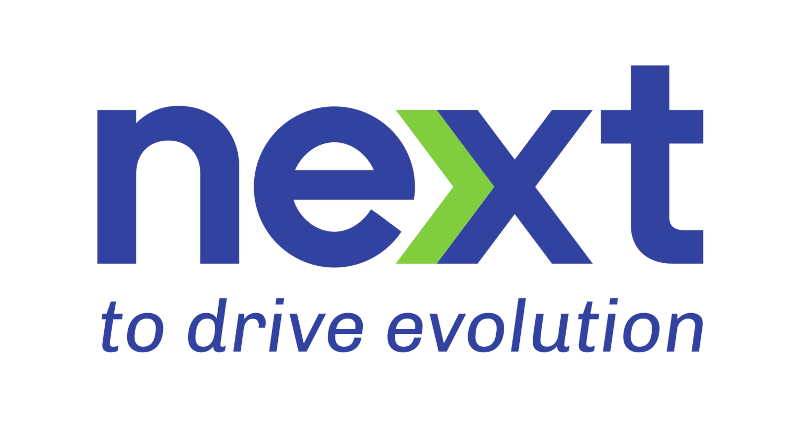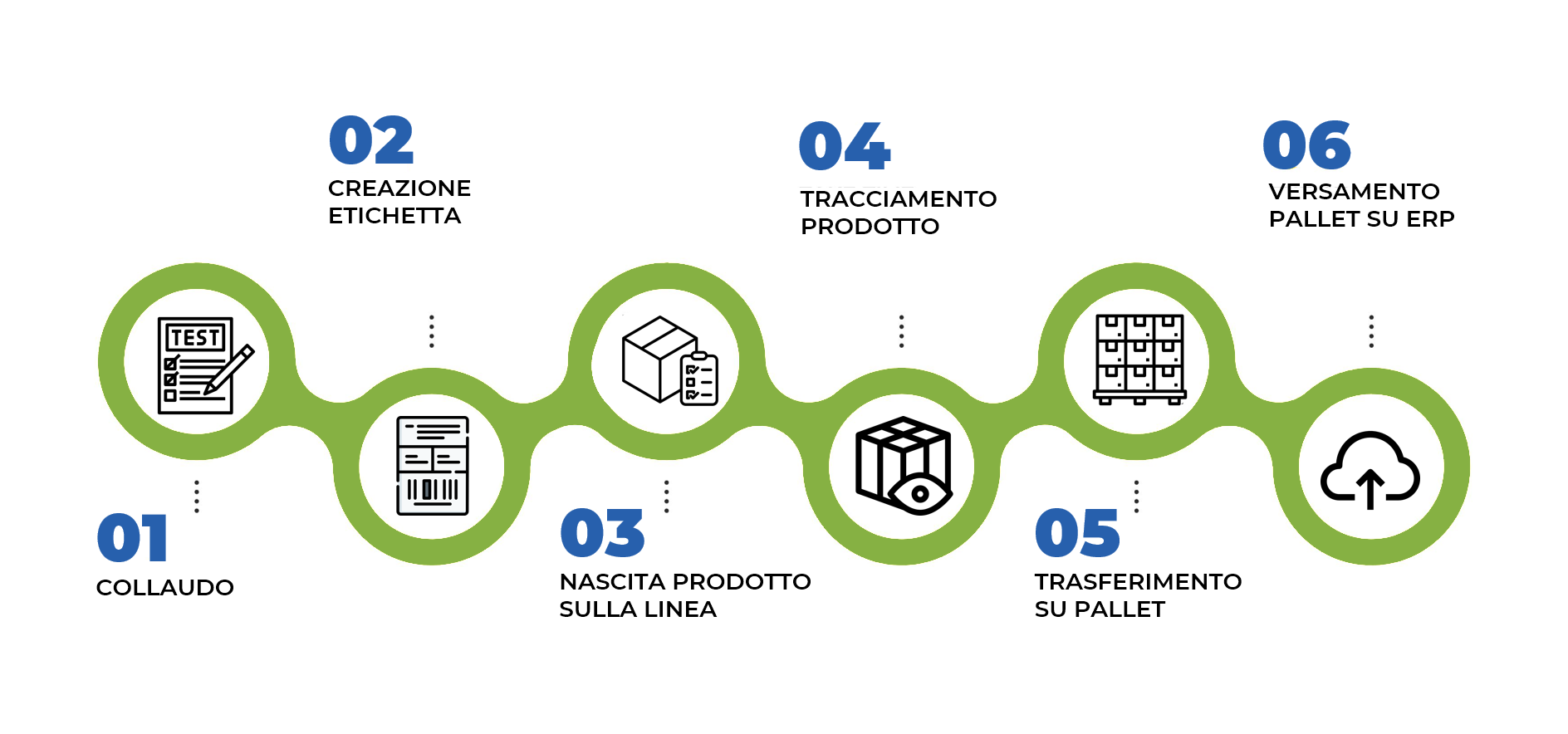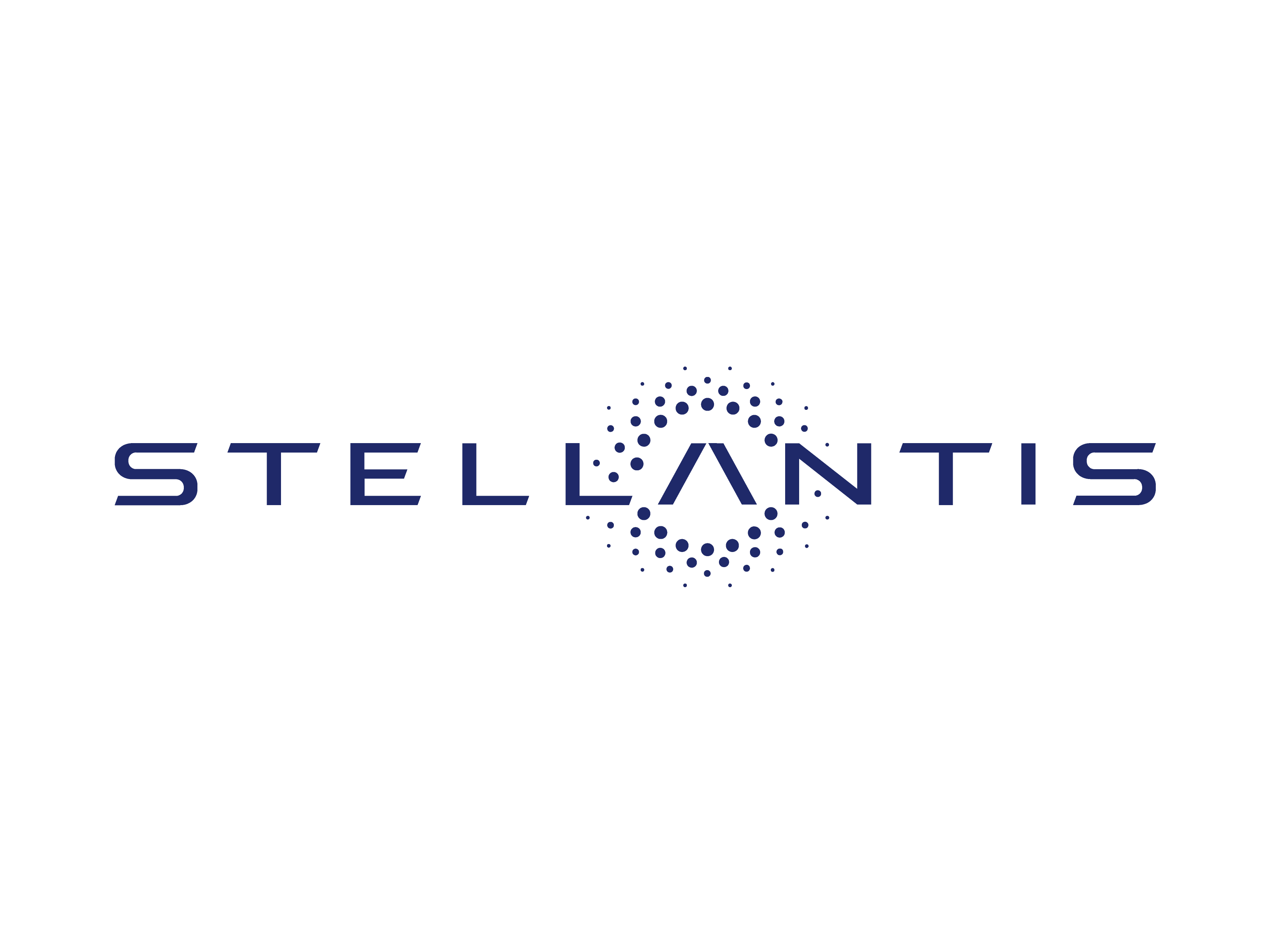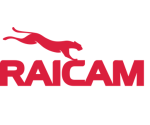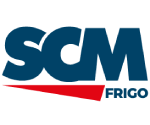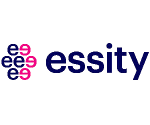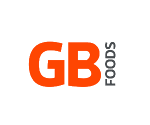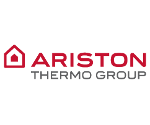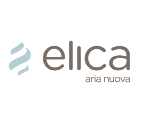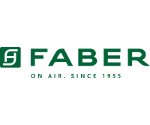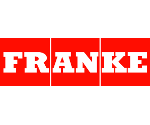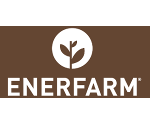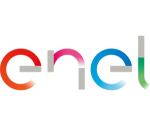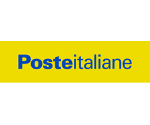Product & Process traceability
Trace product and process to optimize production efficiency and eliminate waste: this is the goal of our solution dedicated to the traceability of every single produced piece.
Product tracement
The identification of the object comes contextually to the creation of the label.
Each produced unit is identified by its internal serial number and associated with the customer serial number. The final step is the transfer of the contents of the single pallet to the ERP.
Everything starts from label generation, which is done by selecting the Production Order (PO) from the database. The labels to be printed are then selected according to the list in the bill of materials. Finally, the internal and customer serial codes are generated automatically.

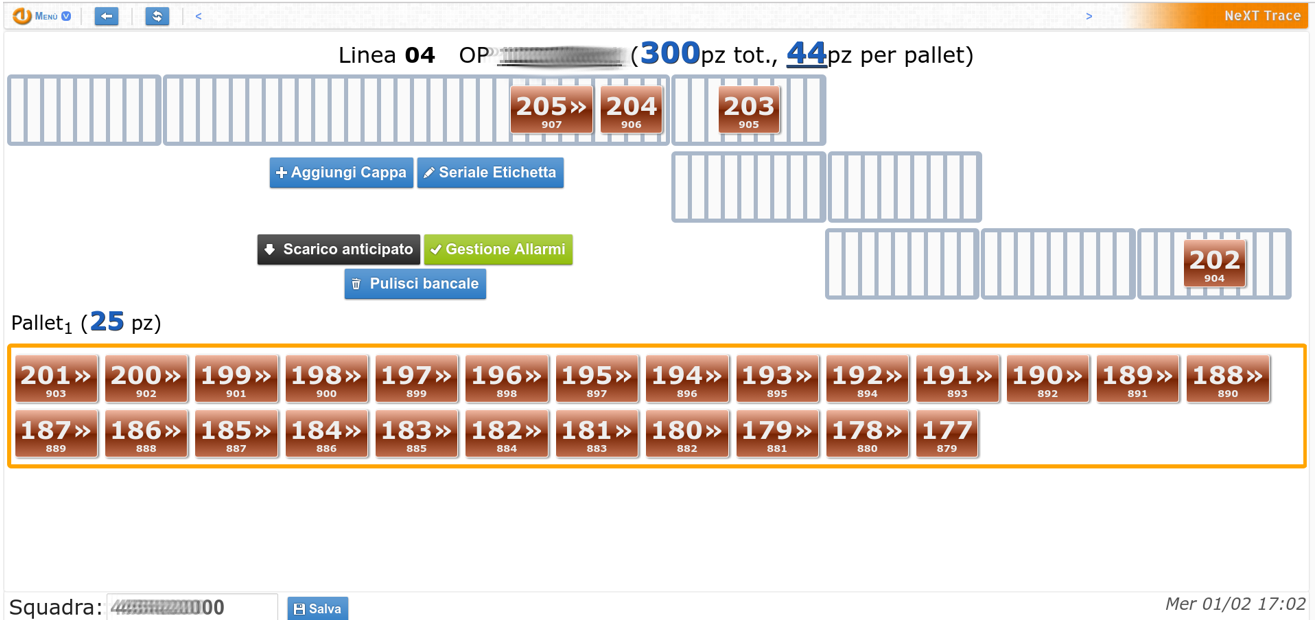
It is possible to know, at any time, the position of the object throughout the entire production process.
In the left image you can clearly see the progression of each piece (identified by an ID number), among the various phases of the process, up to the pallet. In addition to this, the interface lets us know that the total number of pieces will be 300; that each pallet is made up of 44 pieces; that currently 25 pieces have been placed on the pallet.
Once the pallet is completed, we will move on to the packaging phase.
At the same time, the transfer to the ERP will take place.
Another example of product traceability is the use of NFC technology.
Near-field communication (NFC) technology allows two electronic devices to establish communication if they are within a short distance between each other.
For example, communication can occur between an antenna and an NFC device located inside the product’s electronic board.
But what information will the antenna transmit?
The necessary information will be extracted thanks to the product code: once we know the item code (through a barcode reader), the IMPROVE system will be able to select the correct information to be transferred to the NFC device.
All of this can be implemented in a manual line or in an automatic line.

The process tracement
The object of traceability is not only the product, but also the processes through which the product must necessarily pass.
This is the case, for example, of tests: we can know, in real time, if an object has passed through a certain test and the outcome of that. It will therefore be possible to intervene immediately to verify the causes of a possible negative outcome.
The search can take place through the Production Order or through the Lot Code.
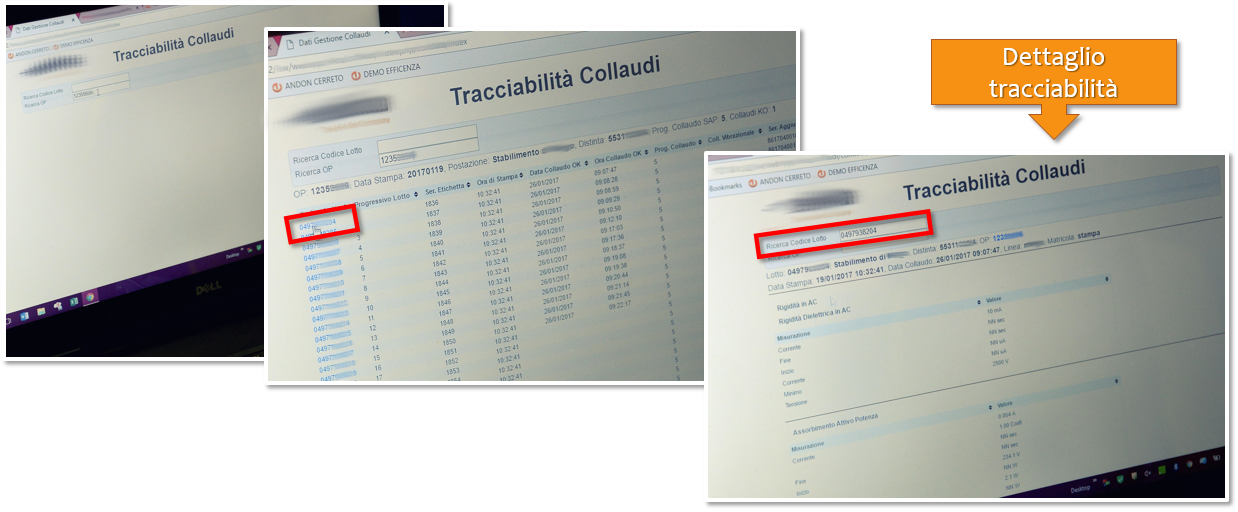
In-line printing of the labels
An integral part of the traceability module is the management of in-line printing of labels, both characteristic labels and packaging labels.
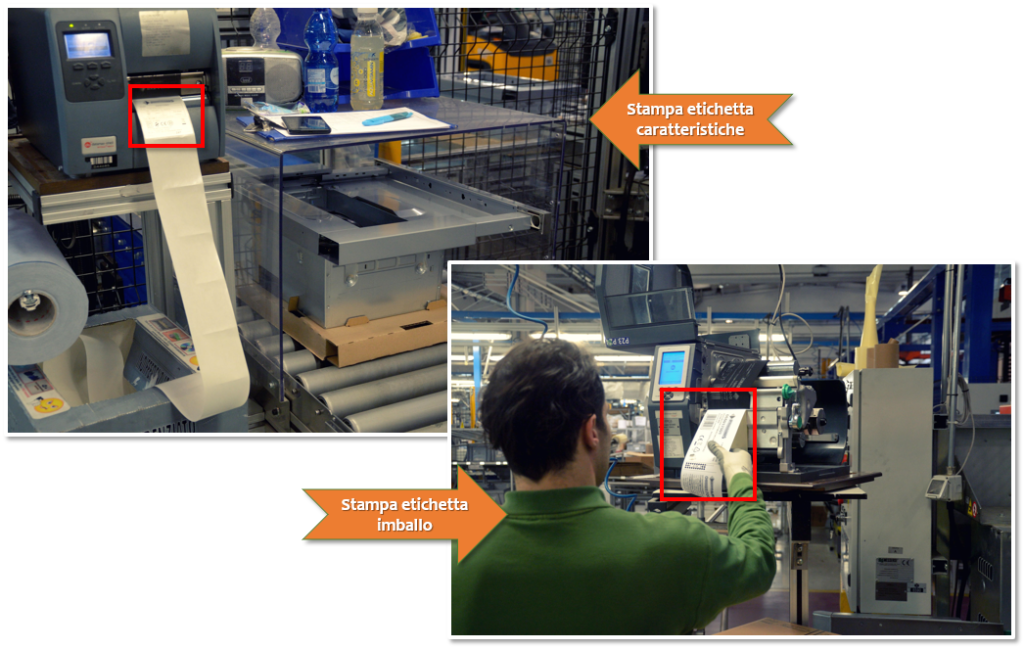
Whenever the object enters the line, the label containing the product characteristics is automatically printed. At the end of the line, on the other hand, the packaging label is automatically generated and the operator will paste it to the product. At this moment, the product is ready to be palletized and the transfer to the ERP takes place.
Casi study: Printing Ikea Labels
A particular case of inline label printing is Ikea labels.
.
We’ll take the example of the production of hoods, which will then become part of the kitchens produced by the Swedish company.
Ikea’s requirement is to be able to trace the entire pallet to which a given hood belongs. This is because, if a defect is found on a hood, it is important to be able to trace all the hoods on the same pallet, to verify that the other hoods do not have the same defect.
For this reason, it is essential to ensure that the special Ikea label and the normal packaging label for the pallet are printed together, so as to be certain of their association.
The IMPROVE system allows just that: the operator can start printing the three labels (two of which are Ikea and a normal one) simply by scanning the unique serial code of any hood on the pallet.

Casi study: Energy label printing
An integral part of the traceability module is the management of in-line printing of labels, both characteristic labels and packaging labels.
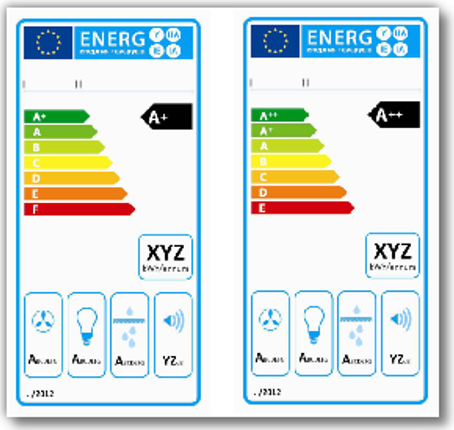
When the object enters the line, the label containing the product characteristics is automatically printed. At the end of the line, on the other hand, the packaging label is automatically generated and the operator will paste it to the product. At this moment, the product is ready to be palletized and the transfer to the ERP takes place.
"Control without action is simply a hobby."
Ready to… trace everything?
© 2023 NeXT Srl Unipersonale - P.IVa. 02510420421 - Privacy and cookie information - Powered by Fuel31
